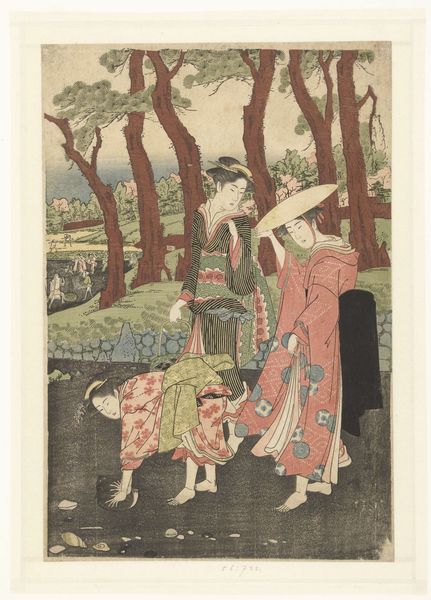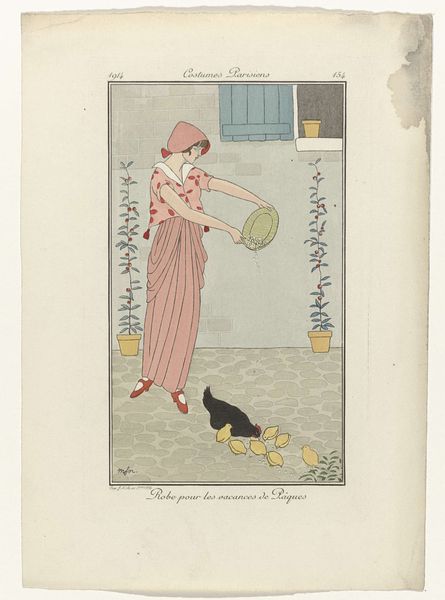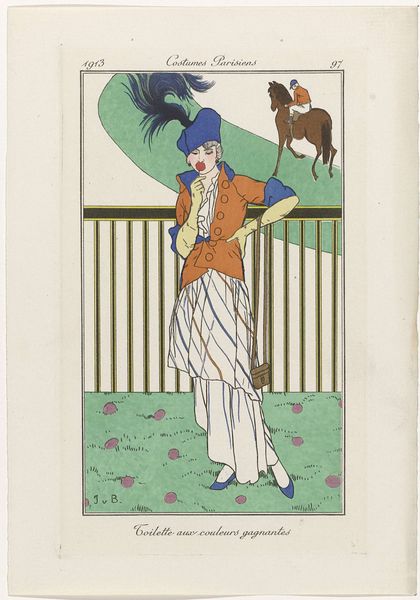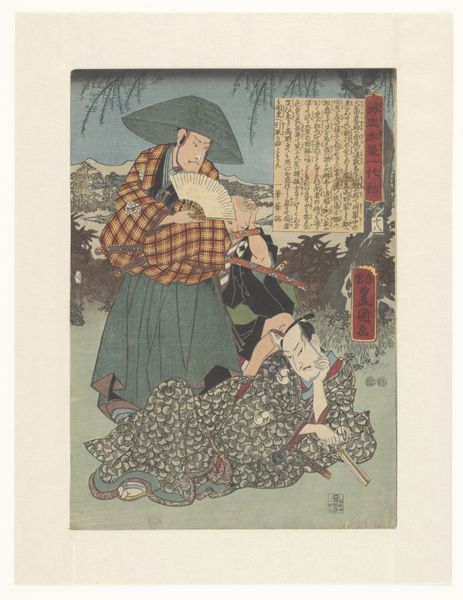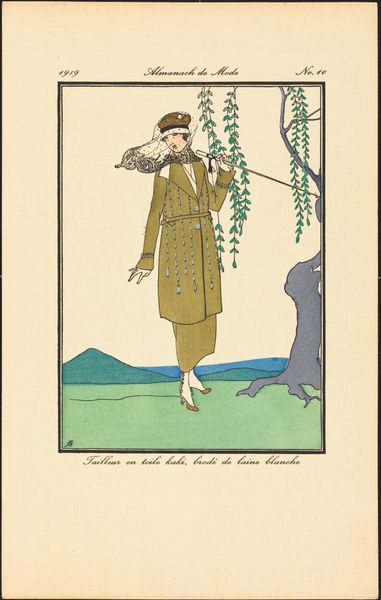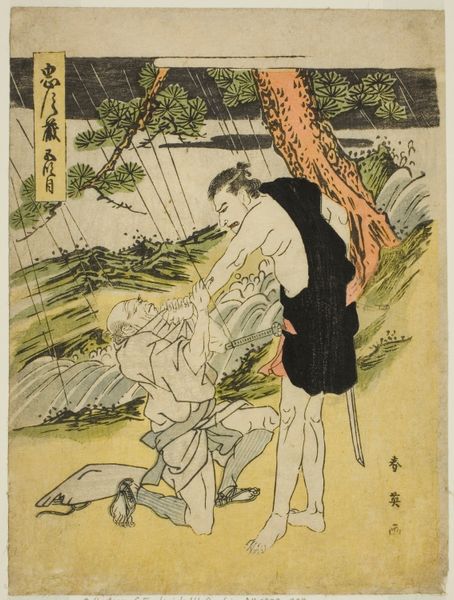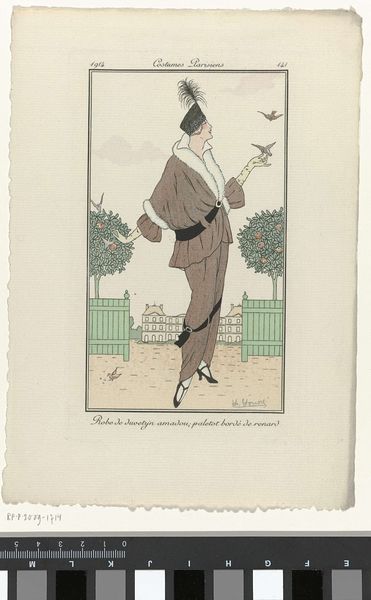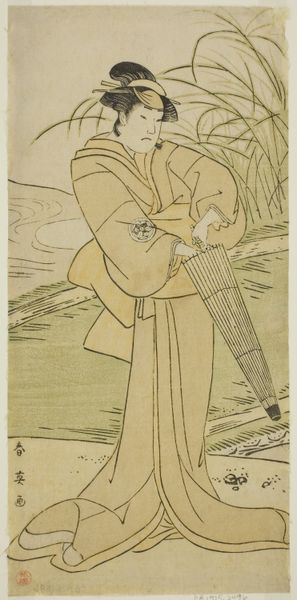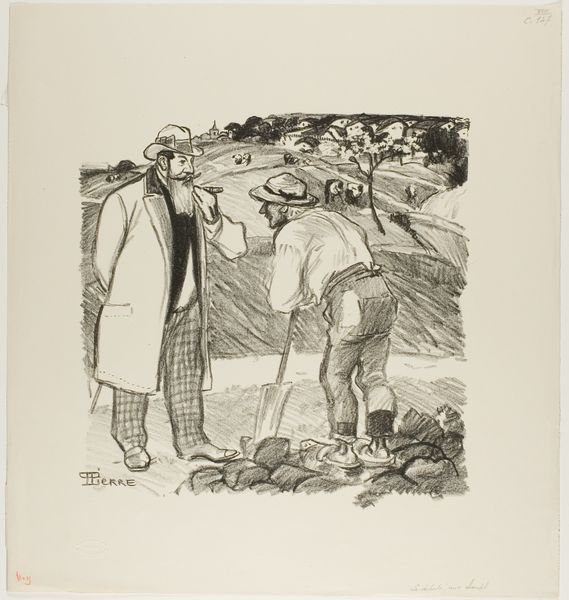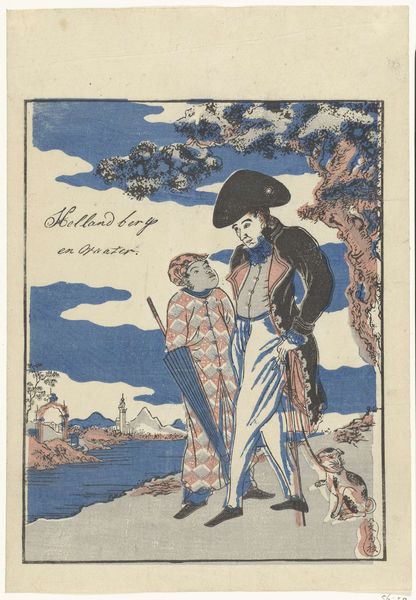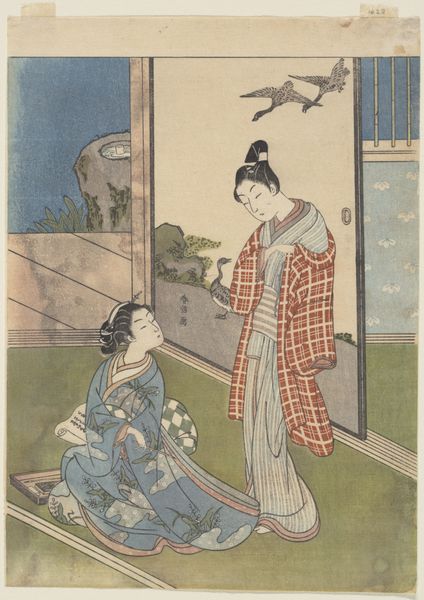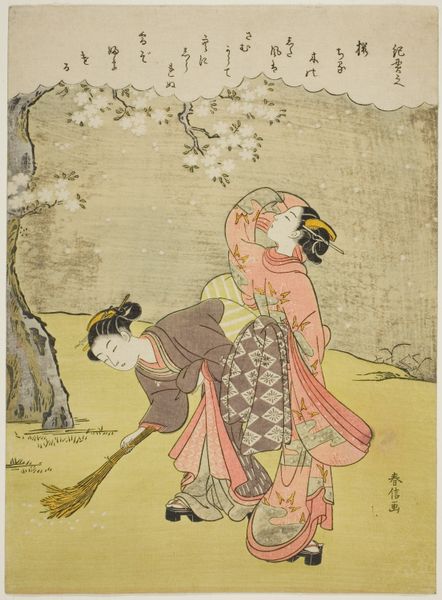
Journal des Dames et des Modes, Costumes Parisiens, 1913, No. 109 : Costume de Chass (...) 1913
0:00
0:00
print, watercolor
#
portrait
#
quirky illustration
#
art-nouveau
#
childish illustration
#
animal
# print
#
landscape
#
cartoon sketch
#
figuration
#
personal sketchbook
#
watercolor
#
ink drawing experimentation
#
sketchbook drawing
#
watercolour illustration
#
storyboard and sketchbook work
#
cartoon carciture
#
sketchbook art
Dimensions: height 178 mm, width 107 mm
Copyright: Rijks Museum: Open Domain
Curator: This watercolor print, created in 1913, is from the "Journal des Dames et des Modes, Costumes Parisiens." It depicts a woman in a hunting costume. Editor: There's something undeniably whimsical about it. The colors are muted, almost faded, and the composition feels surprisingly flat. Is that intentional, do you think? Curator: It reflects the visual language of the time, doesn’t it? These journals were meant to display fashion and taste, defining modern womanhood within certain parameters. Think about what a “modern woman” means and who gets to decide what constitutes progress. Editor: But is the image presenting "hunting" or actually referencing dress-making techniques and manufacturing possibilities? Look closely. A hunter's garb constructed not for rugged utility but for idealized display and consumption? The serge wool and Scottish tartan--a commodity of status in a limited fashion magazine! Curator: Precisely! What strikes me is how this fashion plate embodies the era's social tensions around gender. Women in active roles, but confined and presented as idealized objects to be consumed and emulated. Consider the implications of that gaze in terms of power. Editor: So, rather than seeing this as a simple fashion illustration, we can interpret it as a representation of consumerism, where hunting itself is less of a pursuit, more an emblem to be adorned. What do you think this illustration and print tell us about the working class versus the upper class and material accessibility in France at the time? Curator: The "Costume de Chasse serge verte et écossaise" evokes the broader anxieties and aspirations of that moment. Fashion itself can serve as a site for studying gender and identity politics during that time. Editor: An exploration into consumerism, class, gender, labor and capital presented as accessible trends! An unusual object for deeper thinking about means and production. Curator: Absolutely, thinking of that it allows for some complex questioning about gender and class norms back then. Editor: Indeed. It gives food for more thought than a pretty illustration alone!
Comments
No comments
Be the first to comment and join the conversation on the ultimate creative platform.
